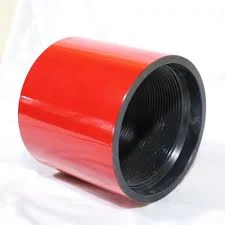well casing coupling
Understanding Well Casing Couplings A Key Component in Oil and Gas Exploration
In the realm of oil and gas exploration, the integrity of drilling operations heavily relies on various components, among which well casing couplings play a vital role. These specialized fittings are integral to ensuring that the casing pipes, which protect the borehole and maintain its structural integrity, are securely joined together. Understanding the design, applications, and significance of well casing couplings highlights their essential role in the overall success of drilling projects.
What is Well Casing?
Well casing refers to the arrangement of large-diameter steel pipes that are inserted into a borehole after drilling. Their primary purpose is to stabilize the well, prevent collapses, and protect both the surrounding environment and freshwater supplies from contamination. Casing also serves as a conduit for oil and gas extraction, assisting in the efficient flow of hydrocarbons and enabling the safe management of pressures within the well.
The Role of Couplings
Couplings are short sections of pipe that are used to connect two lengths of casing together. They are crucial in maintaining the structural integrity of the well casing by allowing for proper alignment and loading distribution along the entire string of casing. Typically made from similar materials as the casing pipes, couplings provide strength and resistance to cracking and failure under high pressure and temperature conditions prevalent in downhole operations.
Couplings come in different types, including but not limited to, welded, threaded, and slip-on couplings. Each type is designed for specific applications depending on the characteristics of the well being drilled, such as depth, pressure, and the geological conditions of the surrounding rock formations.
Types of Couplings
well casing coupling

1. Threaded Couplings These are among the most common types of couplings used in well casing. They feature threads that enable easy installation and removal. The threading must be precise to avoid leaks and ensure a secure connection under heavy loads.
2. Welded Couplings Often used in high-pressure operations, welded couplings are fused to the casing pipes for a permanent connection. This type of coupling provides enhanced durability and resistance to environmental factors but may complicate repairs as they cannot be easily disassembled.
3. Slip Couplings These couplings slide over the ends of the casing pipes and are typically used to accommodate any potential misalignment during installation. They provide a flexible solution but require careful placement to maintain integrity.
Importance of Quality in Couplings
The quality of casings and couplings is paramount in maintaining the safety and functionality of drilling operations. A failure in any component of the well can have dire consequences, including environmental disasters and financial losses. Therefore, strict quality control measures are implemented during the manufacturing of these components. The materials used must withstand the corrosive forces of brines and hydrocarbons while also tolerating high temperatures common at great depths.
Additionally, the technology in well casing couplings has advanced significantly, incorporating advanced materials and engineering principles. This evolution not only improves the longevity of the couplings but also enhances their performance, ensuring a reliable connection throughout the lifespan of the drilling operation.
Conclusion
In conclusion, well casing couplings are a fundamental aspect of oil and gas drilling activities. They ensure the safe and efficient connection of casing pipes, thus playing a crucial role in maintaining the integrity of the well. As drilling technologies continue to evolve, the need for high-quality couplings that can withstand extreme conditions becomes ever more vital. Understanding the different types of couplings and their applications can provide insight into their critical function in the successful exploration and extraction of oil and gas resources. By investing in quality casing and coupling components, companies can significantly enhance operational efficiency and safety in the challenging environment of oil and gas exploration.
-
Unlock the Benefits of Pup Joints for Your OperationsNewsOct.31,2024
-
The Quality of Casing Couplings from ChinaNewsOct.31,2024
-
The Essential Role of Pup Joints in Drilling OperationsNewsOct.31,2024
-
The Benefits of Tubing Couplings for Your ProjectsNewsOct.31,2024
-
Enhance Your Drilling Operations with Tubing Pup JointsNewsOct.31,2024
-
Elevate Your Drilling Operations with Tubing CrossoversNewsOct.31,2024







